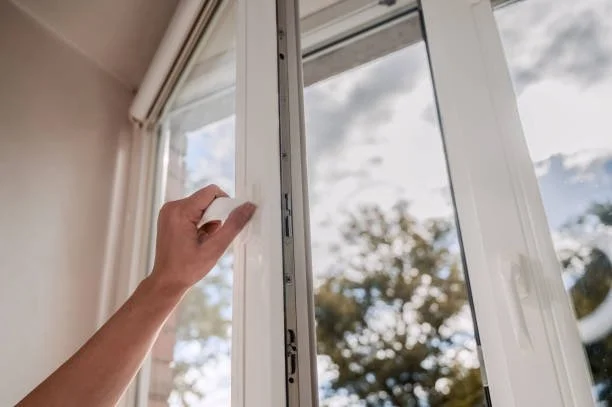Window treatments are an essential element of interior design, providing both functional and aesthetic benefits to any living space. But with so many types and styles to choose from, it can be challenging to find the right one for your home.
This article explores different types of window treatments, including curtains, drapes, venetian blinds, shades, and shutters, and offers insights into their suitability for various settings.
Curtains
Curtains are undoubtedly the most popular type of window treatment. They’re available in a wide variety of fabrics, colours, and patterns so they’re versatile enough to suit different interior design themes.
Light filtration is a key advantage of curtains, as they are available in various degrees of transparency. They can be used in almost any room, providing both privacy and light control.
Curtains are recommended for use in:
● Living rooms: They help create a warm and welcoming atmosphere and can be used to complement the room colour scheme and style.
● Bedrooms: Opt for blackout curtains to block out light and get a better night’s sleep.
● Kitchens: With easy-to-clean curtain fabrics are designed to withstand cooking splatters and humidity.
Drapes
Similar to curtains, drapes are versatile fabric window treatments that provide functionality and enhance the aesthetic appeal of a room.
However, unlike curtains, drapes are usually made from heavier fabrics and have a lining. They are also more formal than curtains, making them suitable for spaces that require a touch of elegance or sophistication.
Drapes are well-suited for:
● Living rooms: Heavier drapes infuse elegance into your space while also providing insulation and light control.
● Bedrooms: Drapes in deeper hue can keep your bedroom dark and cosy, perfect for sleeping well into the daytime.
● Dining rooms: Use drapes to add a touch of formality to your dining space and make the space perfect for hosting dinner parties and gatherings.
Venetian Blinds
Made of horizontal slats, typically from wood, faux wood, or aluminium, and attached with cords or tapes, venetian blinds are stylish yet simple window treatments.
The slats can be raised, lowered, or tilted to control light and to meet your privacy requirements. The light control feature of venetian blinds also helps reduce glare on computer screens or televisions, enhancing productivity and comfort.
Venetian blinds are appropriate for:
● Bathrooms: Faux wood or aluminium venetian blinds are resistant to moisture and humidity, making them ideal for bathrooms.
● Kitchens: Easy-to-clean aluminium blinds can withstand heat and humidity.
● Home offices: Wood or faux wood venetian blinds can help create a professional look for your home office and offer excellent light control.
Vertical Blinds
Vertical blinds consist of vertical slats made from various materials, such as fabric, vinyl, or wood. They are ideal for large windows or sliding glass doors, as they can be easily drawn to the side.
These window treatments are suitable for:
● Sliding glass doors: They provide excellent light control and privacy for houses with large doors or sliding doors leading to a veranda or patio.
● Large windows: Vertical blinds can be used to cover wide window expanses and customised to fit any size.
● Bedrooms: Fabric vertical blinds offer a soft and cosy look, while vinyl or faux wood options provide a sleek and modern appearance.
Roman Shades
Fabricated from a single piece of fabric that neatly folds into horizontal pleats when raised, roman shades are a classic window treatment option.
Roman shades combine the functionality of blinds with the soft appearance of fabric. They have a clean and elegant look and are available in various fabrics, colours, opacities and patterns. This makes them a perfect complement to various interior design styles.
These window treatments are appropriate for:
● Living rooms: Use them to add a touch of sophistication and style to your living space.
● Bedrooms: Choose ones with blackout fabric to block out light effectively and create a cosy sleeping environment.
● Home offices: Roman shades have a clean, streamlined look that’s perfect for your home office, and provide efficient light control.
Cellular Shades
Also known as honeycomb shades, cellular shades comprise a series of connected pleats that form air pockets, providing insulation and light control. Their distinguishing feature is their honeycomb-shaped cells, which trap air, providing excellent insulation.
Aesthetically, cellular shades have a sleek and modern appearance, so they can easily blend with various interior design styles. Their clean lines and range of colours, textures, fabrics, and cell sizes make them a great choice for most rooms.
Cellular shades are recommended for use in:
● Bedrooms: Blackout cellular shades can help regulate temperature and block out light effectively so you can sleep comfortably.
● Living rooms: Light-filtering cellular shades can provide privacy while allowing natural light to enter the room, creating a warm and inviting atmosphere.
● Energy-efficient homes: The insulating properties of cellular shades can help reduce energy consumption, making them an ideal choice for eco-friendly or smart homes.
Roller Shades
Consisting of a single piece of fabric or vinyl that rolls up onto a tube when raised, roller shades are popular for their ease of use, minimalist design, low maintenance requirements, and affordability.
Roller shades can be used in different spaces and are available in various materials, colours, opacity levels, and patterns. They are most appropriate for:
● Kitchens: Easy-to-clean vinyl roller shades can withstand the heat and humidity in a kitchen.
● Bathrooms: Choose moisture-resistant roller shades for your bathroom where water splashes are typical.
● Home offices: Roller shades offer a sleek and minimalist look if you want an uncluttered workspace.
Bamboo Shades
If you’re going for an organic interior design style or you want to make your space look cosy, bamboo shades are a perfect choice.
Also known as woven wood shades, they are made from natural materials like bamboo, grass, and reeds. Bamboo shades are a unique and eco-friendly window treatment option that can add texture and warmth to a room.
Bamboo shades are suitable for:
● Living rooms: The organic look of bamboo shades can add a touch of nature to your living space.
● Sunrooms: Bamboo shades allow filtered light to enter while ensuring privacy, making them ideal for sunrooms.
● Eco-friendly homes: Opting for window treatments made from natural materials like bamboo makes for a sustainable and environmentally conscious choice.
Shutters
Considered a classic and durable window treatment option, shutters are solid window coverings made from wood, faux wood, or vinyl. They consist of horizontal louvers that can be tilted for efficient light control and privacy.
You can install shutters on the interior or exterior of your home. They can be customized to suit a range of interior design styles, from traditional to contemporary, as they are available in various colours, materials, and finishes.
Shutters are best used in:
● Bathrooms: Vinyl shutters are moisture-resistant and easy to clean, making them perfect for bathrooms.
● Bedrooms: Shutters offer excellent privacy and light control which are essential to a comfortable sleeping environment.
● Coastal homes: Exterior shutters can provide protection from storms and harsh weather conditions.
Solar Shades
If you want a modern and energy-efficient window treatment designed to reduce solar heat gain and provide protection for your home interior from harmful UV rays, then go for solar shades.
Also known as sunscreens or sun shades, solar shades are made from a tightly woven fabric that filters sunlight and reduces glare while allowing occupants to enjoy the view outside (this depends on the opacity of the material).
They are available in various levels of opacity, and come in a range of textures, patterns and colours so they can easily blend with various interior design styles.
Solar shades are suitable for:
● Sunrooms: They can reduce heat and glare while preserving the view.
● Living rooms: Solar shades offer a balance between privacy, light control, and maintaining the view outside your home.
● Energy-efficient homes: Solar shades can help reduce energy consumption by blocking solar heat gain.
Find the Right Window Treatment for Your Space
Window treatments play a crucial role in shaping the ambiance, style, and functionality of your living space. They can also help make your home more energy efficient.
By understanding the different types of window treatments and their suitability for various spaces, you can choose the perfect option for your home.

















